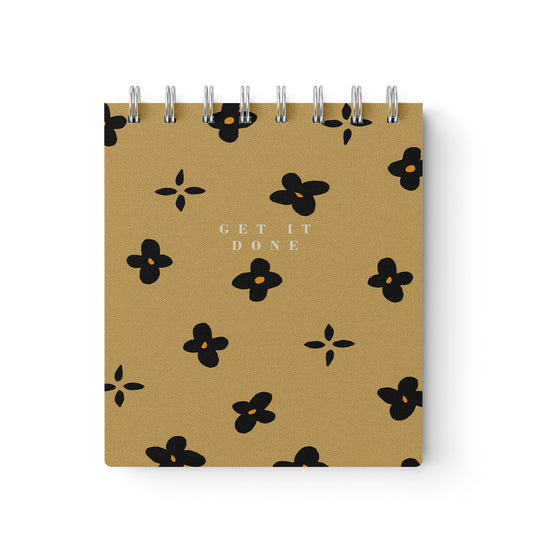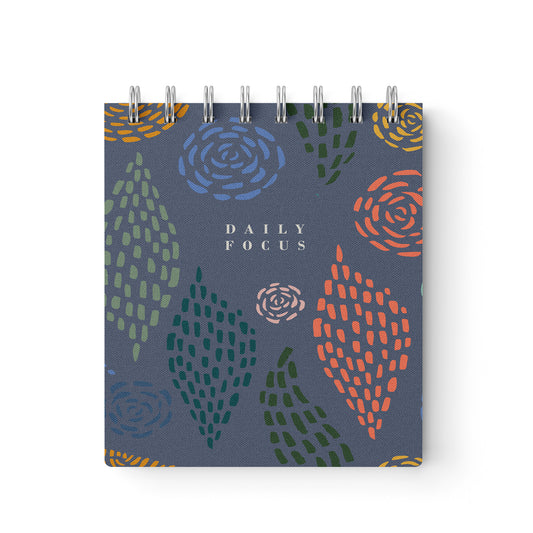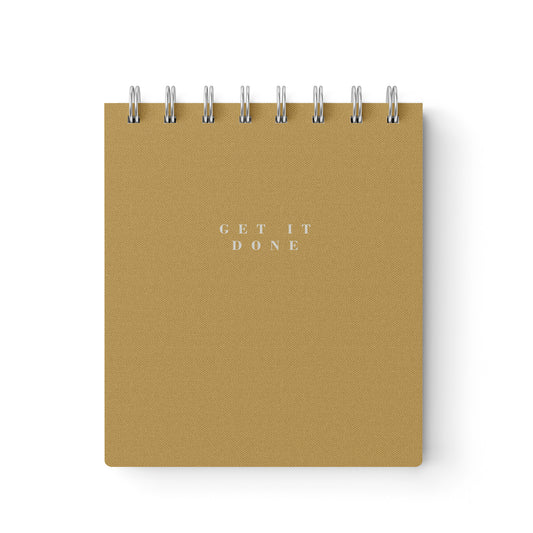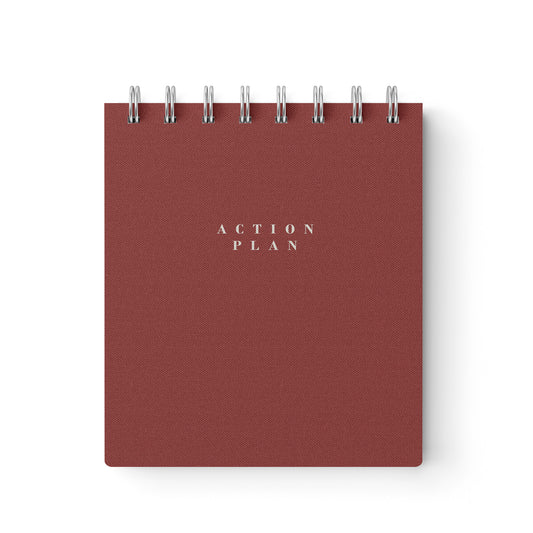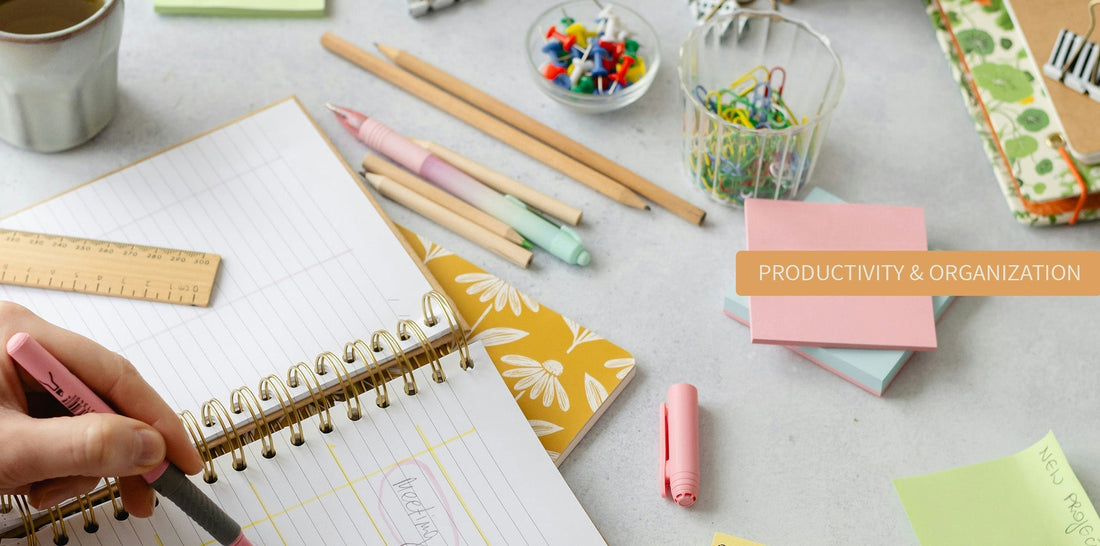
The Non-Planner's Guide to Getting Things Done
Share
Have you ever felt like you're drowning in a sea of sticky notes, or that your "To-Do" list grew into a monster you're constantly running from? Maybe you've tried all the fancy planners, the bullet journals, the apps... only to abandon them after a week and you end up feeling even more guilty. If that sounds like you, I feel you!
I've always been a somewhat organized person, but I did not like to always plan. I've had my share of half-used planners, pocket calendars, never-ending pages of to do lists, and lots of sticky notes here and there to remember to do the important things. I've been there. As I've gotten older and have so many more responsibilities now, I've evolved, and I use a planner with checklists daily. I found a system that works for me. It really helps me to TRY to stay as organized as possible and on top of my crazy schedule.

Not everyone thrives with a traditional planner though. Many people are overwhelmed by a planner's structure but still want to stay organized, so don't worry—you're not alone! There are plenty of ways to get things done without the pressure of being tied to a traditional planner.
"What may work for one may not necessarily work for another."
We are all different - some people love to plan everything, while others don't. If you are a non-planner, this post is for you. It's all about finding a simple, flexible system that supports your natural flow and what works for you, allowing you to accomplish the things you need to do. Guilt free!
Here are five tips for tackling tasks effectively while still honoring your need for flexibility and creativity.
1. Use a Simple Desktop Task Pad
A desktop task pad is the perfect tool for those who need to see things visually but don't want to commit to an all-encompassing planner. Think of it like a "command center" for your day, where you can jot down important tasks, notes, and deadlines. It's large enough to be visible on your desk without that overwhelming feeling. Plus, you can use it for short-term task tracking rather than long-term scheduling.
Why It Works: A desktop task pad allows you to break down your tasks into small actionable steps in a way that feels natural and manageable. You'll feel productive and motivated without feeling confined to a structured, dated format.
2. Break Tasks into Micro-Tasks
Instead of looking at a big task like “organize the office,” break it down into micro-tasks like “sort the bookshelf” or “file paperwork.” This makes the task feel less daunting and gives you something small to check off, which can be more rewarding.
Why It Works: Small wins add up to big progress! Focusing on small chunks of a task reduces overwhelm and helps maintain focus.
3. Use Digital Tools That Integrate with Your Life
Are you more tech-savvy than paper-organized? There are many simple, intuitive digital tools like Trello, Todoist, or Google Keep available today that may appeal to you more. These apps allow you to create lists, set reminders, and visualize your tasks with checkboxes and color-coded categories, all without the rigid structure of a traditional planner.
Why It Works: Digital tools provide flexibility and on-the-go access so you can edit, update, and check off tasks as your schedule changes. The ease of collaborating with others if needed is a bonus.
4. Try the "One Task at a Time" Approach
Instead of juggling multiple tasks at once, focus on one thing at a time. It may sound simple, but it’s powerful. Start with one task and give it your full attention. When it's complete, move on to the next. This will help you stay more productive and feel less frazzled.
This strategy isn't about doing everything. It's about doing the most important things. Pick out a few things, if you got them done today, would make you feel genuinely accomplished and move your day forward. They can be small wins or significant steps, but they should be the most impactful items to you.
Why It Works: Focusing on one task helps reduce stress and improves the quality of your work. It also makes the process feel more manageable and less overwhelming.
5. Make Time for Reflection and Adjust

You don’t need a planner to track your progress. Set aside a few minutes each day or week to reflect on what’s working and what’s not. Are there tasks you’re avoiding? Are certain strategies more effective than others? Use your reflection time to adapt, not to stress about missed deadlines.
Why It Works: Reflection is a flexible way to stay on track. By adjusting as you go, you avoid the feeling of failure that comes with missed tasks and stay more in tune with your true goals.
BONUS TIP: Embrace the beauty of imperfection. Don’t beat yourself up over missed deadlines or things left unchecked. Life happens, and flexibility is key to staying productive without the stress of adhering to a rigid structure.
Find What Works for YOU!
Your approach to organization should be as unique as you are. With the right tools it becomes effortless to be your best, most productive self.
For those who like to keep things simple, we've introduced the perfect tool that’ll make your desk a productivity powerhouse - our new Desktop Task Pad! The task pad is a great option to start with. It helps you stay organized without the fuss of a full-fledged planner and it's designed to make your workspace more organized and efficient.
Check it out and see if it’s the perfect tool for you!
- Easy to use
- Plenty of space for jotting down quick tasks
- Keep track of key reminders
- Effective way to get things done on your own terms
Start using the Desktop Task Pad today and see how it transforms your productivity!



